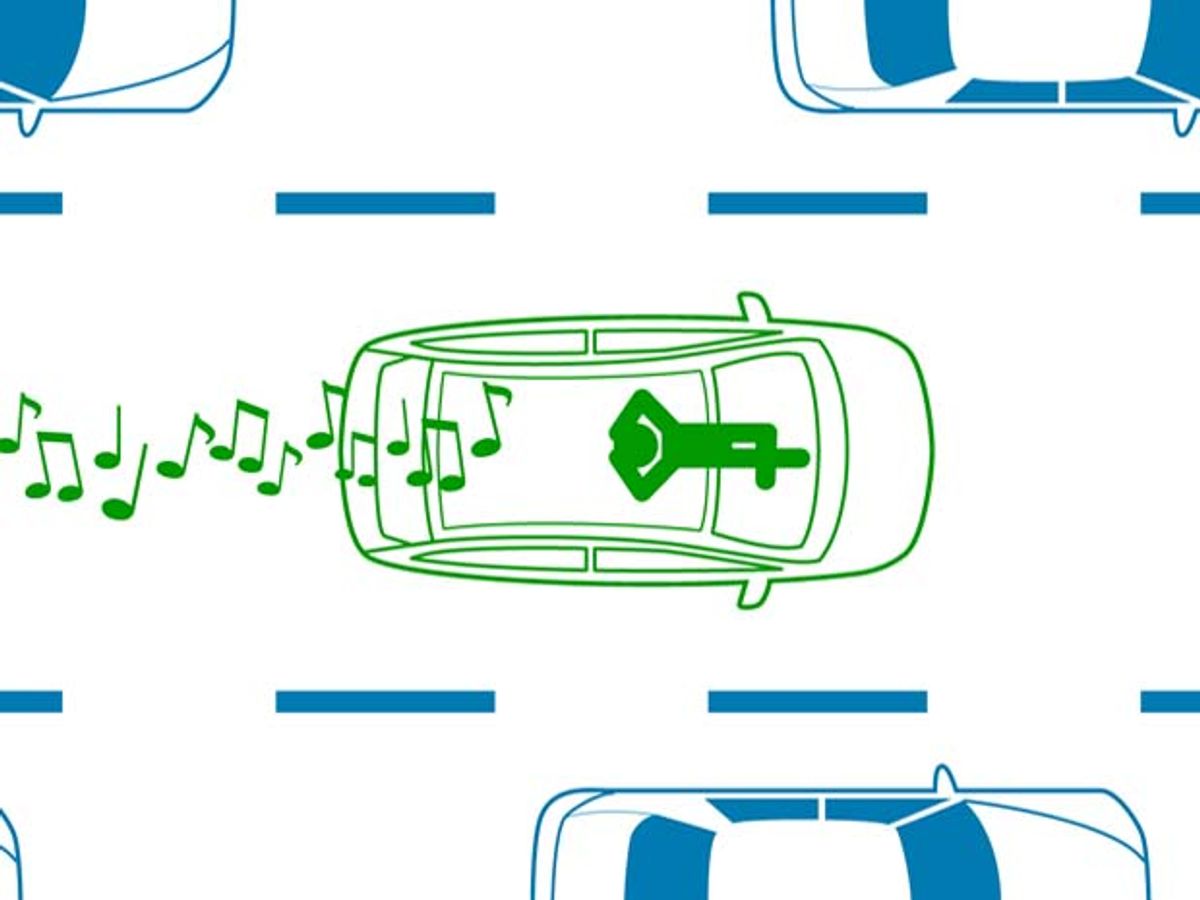Adaptive Cruise Control and Traffic-Jam Assistants
Lock on to cars with radar, but switch to other sensors in traffic

On the A-1 highway north of Madrid, Ford Spain’s press fleet manager, Eusebio Ruiz, locks his car’s radar onto another vehicle perhaps 75 meters ahead. An outline of the car appears on the dashboard with a few red bars behind it indicating the target distance. Deep memories of the film Top Gun and years of flight-simulator play kick in, and I reach for the joystick to arm my Sidewinder missiles. But the Ford Kuga is armed with neither Sidewinders nor a joystick. I sigh, click my pen, and continue taking notes as Ruiz fiddles with buttons on the steering wheel.
“If you want to have fun, you bring this in,” he says, until our car, with no footwork on his part, closes the distance to a few, more Madrid-like car lengths and then holds steady. Ruiz was demonstrating a technology Ford calls adaptive cruise control (also known as autonomous cruise control, with the same handy acronym of ACC). Like traditional cruise control, ACC requires drivers to select a target speed and throttles the engine to achieve it. But ACC also uses sensors, once lasers but now mostly radar (See “Keeping Cars From Crashing,” 3 September 2001, and “Long-Distance Car Radar,” 29 September 2011 in IEEE Spectrum), to adapt the target speed to that of slower-moving cars ahead.
Not long after Ruiz got us into formation with the car ahead, that driver changed lanes. Then we hit a hill and the engine revved in response to maintain speed. The latest commercial iterations of ACC could have anticipated that hill, using GPS data and a map, and adjusted the transmission ahead of time. They can also integrate data from cameras to read traffic signs and make smoother transitions ahead of zones with higher or lower speed limits. From a sensor and CPU standpoint, little distinguishes today’s front-runners—offered in Europe by Audi, BMW, and Mercedes-Benz—as the manufacturers share parts suppliers. They do, however, differ in how they program their ACCs and in how the car’s control systems respond to sensor information.
The differences may be more clear when driving at lower speeds, where just idling the engine or adjusting the transmission may not be a fast enough response to changing road conditions. Braking and steering behavior play a large role in how a car feels and may be an area where the carmakers can distinguish themselves, according to Audi spokesman Mark Dahncke. Both functions are crucial to the most-sophisticated driver assistance systems on the market today, called traffic-jam assistants or stop-and-go adaptive cruise control.
Traffic-jam assistants take over below 30 or 40 kilometers per hour (19 to 25 miles per hour), depending on the system. BMW’s X5, 5 Series, and 7 Series can also handle low-speed steering, which is more sophisticated than most so-called lane-keeping aids, which tend to nudge the wheel once before requiring drivers to take over again.
What has made traffic-jam assistants possible is not ACC radar improvement so much as the increasing sophistication of the cameras, image processors, and ultrasonic sensors first installed to aid parking. Most car radars have been tuned to detect relative motion, not stopped obstacles, and are sensitive to large, metallic objects. So carmakers hesitated to rely on them in slower-driving environments, where a pedestrian or other obstacle might appear. Cameras, on the other hand, feed image processors that are getting better and better at detecting pedestrians under a wider range of light and weather, as computer scientist Antonio M. López and colleagues at the Autonomous University of Barcelona are demonstrating.
Another problem carmakers had to overcome was a networking challenge: “It was a matter of how fast we were going to be able to send information between the different control modules, and of reliability,” says BMW spokesman Julian Arguelles. In Top Gun, Maverick said, “If you think, you’re dead,” in a dogfight. But in a traffic jam, a car that thinks for its driver may be just what it takes to escape the danger zone.


